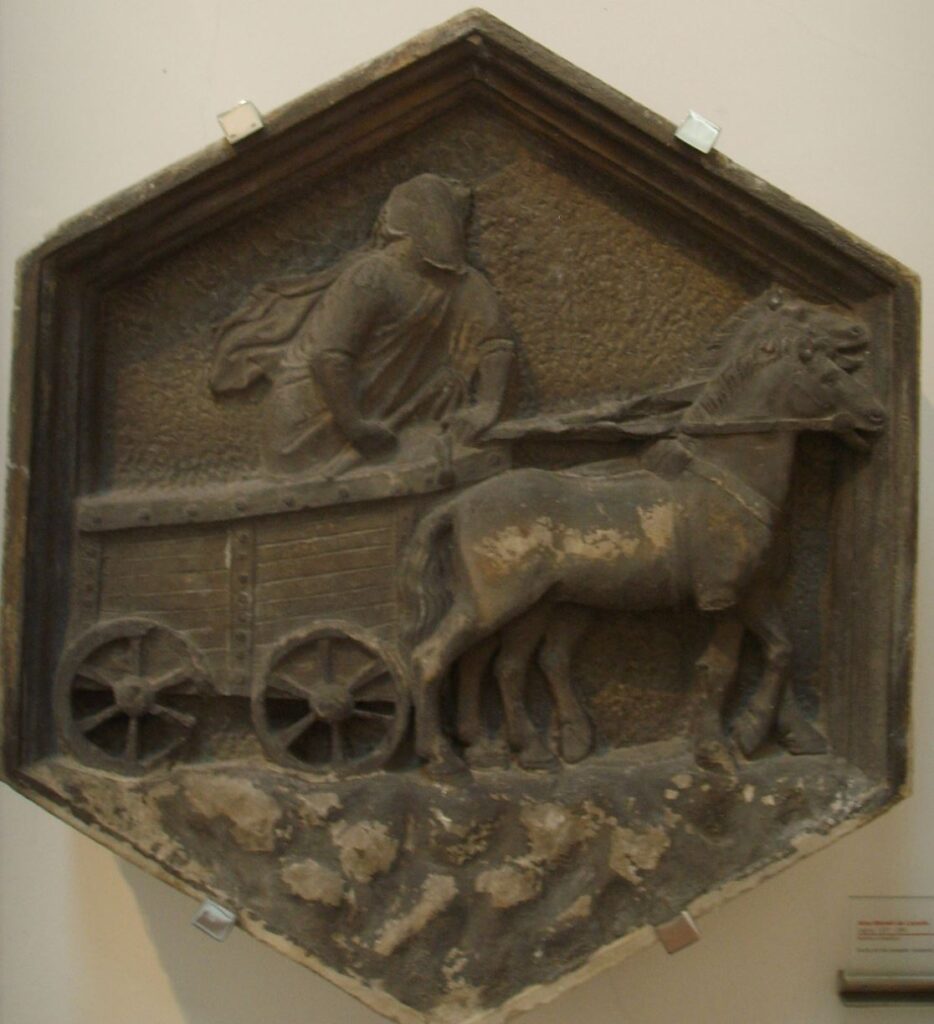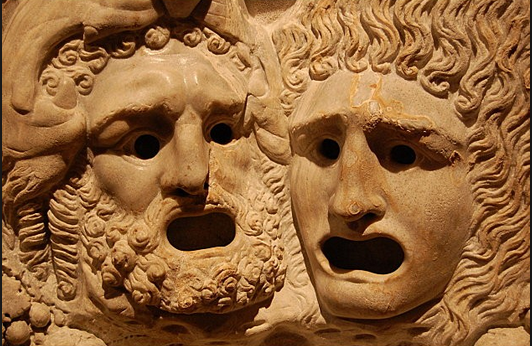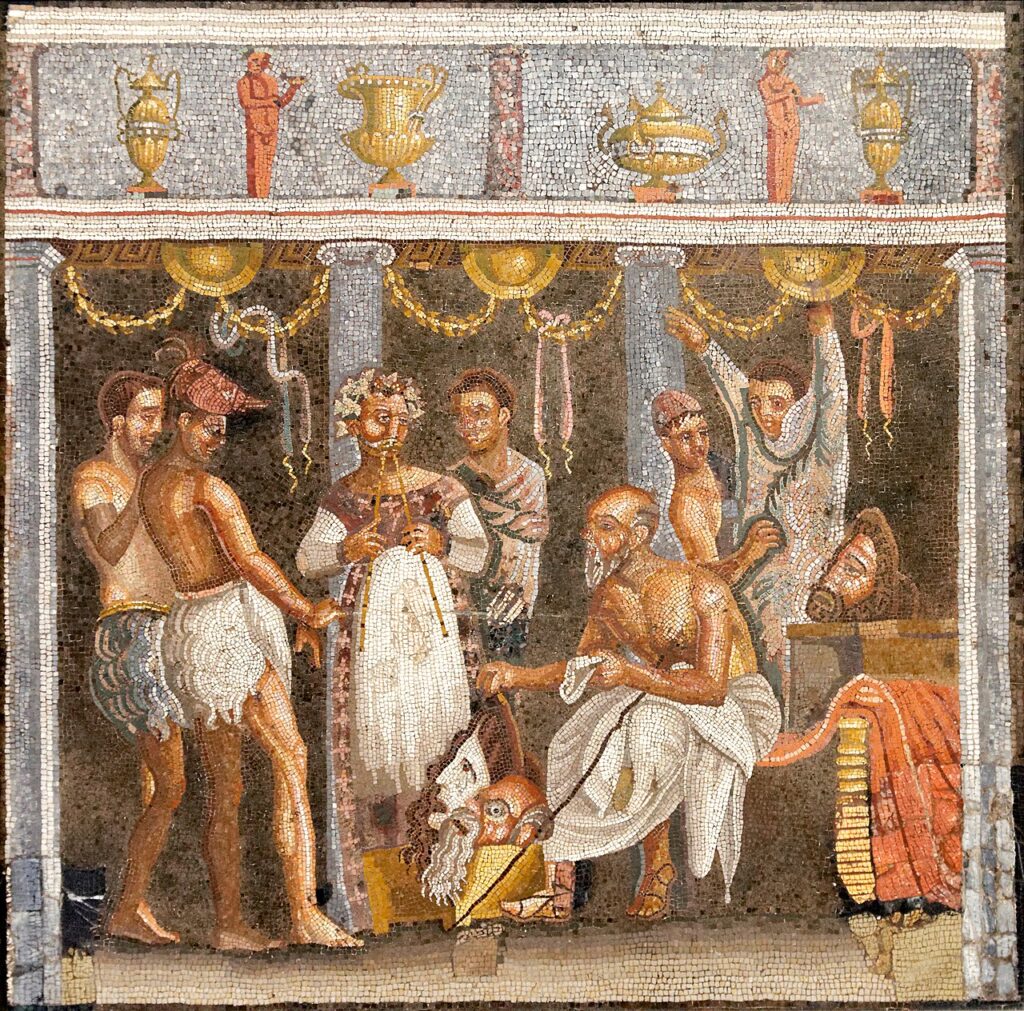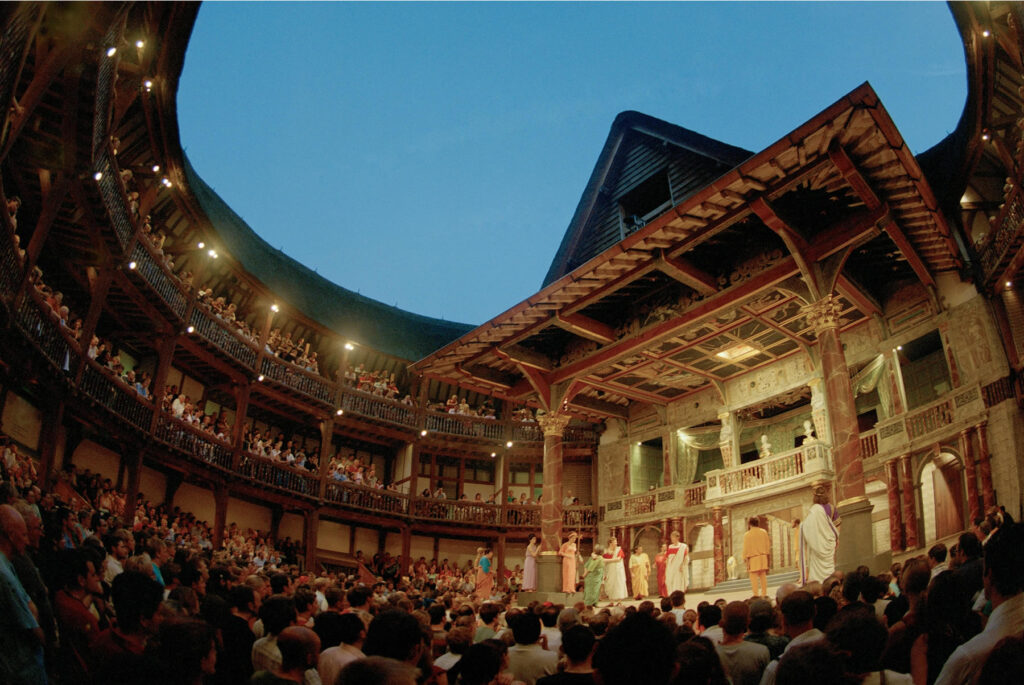
We celebrate actors, we hang their pictures, we follow their lives, we talk about them, and we watch them in awe. In a way, famous actors are todays’ royalties. Whatever they do ends up on the news for their fan’s content. Yet, it was not always like that. The profession of an actor has gone through many stages of development. Very few people know that acting has not been common throughout human history and that the first actor and the birth of this art form is only 2,500 year old.
Before Acting
Before acting there was narrating. The ancient Greek held few yearly festival in Athens, one of them was called Dionesya. A festival in honor of the god Dionisius. The festival portrayed people singing and reciting narrative and poems. All the narrations were in third person, meaning that the narrator sung or told the story as he was watching the event. For example, an narrator would say “And the god Dionyusius would reply…”, in stead of acting the part of the god.

The First Actor
In 534 BC, a Greek narrator named Thespis entered the competition in the city of Dionesya in Athens and for the first time he stepped out of the dithyrambic chorus. The dithyrambic chorus was a hymn sung and danced by up to 50 men as a group in honor of Dionysus. During the chorus, Thespis jumped in a cart and started voicing and interpreting the character himself. As a result, he actually won the competition that year. Aristotle tells the story two centuries later and calls the art “mimesis”, acting out in imitation rather than “diegesis” via narration.
Thespis’ performance was such a success that he went on the first known tour where he interpreted different characters by changing face masks. In fact, he actually wrote his own dramatic scripts thus giving birth to what we know today as Greek Tragedy. Thespis also added the prologue where he introduced the play. In addition, he started using different scenes called episodes. In a way, he also wrote and performed the first musical by adding singing and dancing.

The Birth of Greek Theatre
Few years later, Aschylus is credited with adding a very important element to acting, a second actor. Thespis used different masks to interpret different characters, but Aschylus added a second actor and the famous Sophocles added a third actor in 438 BC and won the same competition won almost 100 years earlier by Thespis.
Three types of plays started developing. First was the tragedy, then came the comedies and lastly satyr. Plays started to be more strict and in a written form versus interpretation and vocal projection became important as theaters were in the open. As a consequence, acting became an exaggeration of movement and voice modulation in an effort to reach all the spectators
Actors and Theatre in Rome

As Rome grew in power and in dominance, they took over theatre from the Greeks. Romans proffered entertainment over drama and more music and dancing was added. The style of Roman performances called “spectacles’ are much closer to today’s theatre, TV shows, and cinema. Thanks to writers like Plautus, Terence, and Seneca the Younger, we learn a lot about everyday life and Roman society.
Actors were very low in social status. In Rome most actors were foreigners as it was deemed too low of a profession for a Roman citizen. Actors were prohibited in serving in the military which limited considerably their chances of improving their status. It was impossible to advance socially as a male without serving in the military at the time. In addition, actors did not have the same political and civil rights as other citizens. They were literally one of the lowest classes in Rome. How things have changed!

The Death and Rebirth of Actors and Thatre
After the fall of Rome, actors and theatres disappeared. The only form of acting that was still popular in the dark ages was that connected with religious imagery and morality plays. The revival of theatre occured during the Renaissance. The ‘Commedia dell’arte’ was born, a art form based on actors wearing elaborate masks and improvising dialogues. This form had and enormous influence on theatre all over Europe, inspiring many including William Shakespeare. Moreover, during the italian “Commedia dell’arte”, women were allowed for the first time to act on stage. William Shakespeare himself was alledgely an actor turned writer and one of the first to be recognized during his life for his talent.

Actor’s Reputation From Low to High
In 1710 the reputation of actors got even worst as after a period where puritans banned theatre as they deemed it immoral. In fact, “Restoration comedy” was notorious for its sexual content. At this point, even in England women started being allowed on stage which led to the first professional actresses and the rise of the first celebrities since ancient times.

The reputation of actors did not improve until the 19th century. The rise of Actor stars and audiences ‘flocking” to view their performances drove the profession to a more honorable state. Actor-managers emerged and companies who controlled actors, productions and financing emerged. In fact, an industry was born that quickly took over Theatre and later the movie industry.
[The main Image portrays David Garrick in Richard III. He was an English Actor, playwright, theatre manager, and producer in 18th Century England who influenced all aspect of acting]